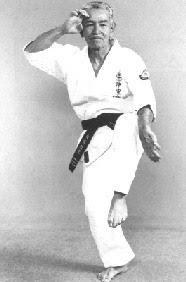Ryuko Tomoyose (December 10, 1928 – April 9, 2019) was a central figure in Uechi-Ryū Karate who played a key role in preserving and spreading this Okinawan martial art both locally and internationally.
Born in Futenma, Okinawa, he was the son of Ryuyu Tomoyose, the first student of Kanbun Uechi in Wakayama, Japan. From a young age, Ryuko trained in Shōrin-Ryū and Goju-Ryū, but ultimately pursued Uechi-Ryū under the tutelage of Kanei Uechi around 1942. After Kanbun Uechi returned to Okinawa in 1946, Ryuko and a group of students built a dojo in Futenma for Kanei, forming a core base for the style.
In 1949, Ryuko assisted Kanei in founding the Nodake and Kanzatobaru dojos in Ginowan, which later combined into the famous Futenma dojo in 1957. Together, they embarked on expeditions to China (Fuzhou) to retrace the roots of Pangainoon and Uechi-Ryū.
Ryuko began teaching George E. Mattson in 1956—the first non-Okinawan to earn a black belt in Uechi-Ryū. He traveled extensively, particularly to the United States, serving as an interpreter and ambassador for the style.
He was bestowed the rank of Hanshi 10th Dan and—with recognition from Okinawa Prefecture—named a Living Cultural Asset around 2000. As Honorary Chairman of OKIKUKAI, he contributed to organizational leadership in Okinawan traditional karate.
Ryuko’s contributions helped ensure the survival and dissemination of Uechi-Ryū around the world. His influence remains evident in modern training programs like the Uechi-Ryū Kenkyūjo, which upholds traditional training methods he helped preserve.


